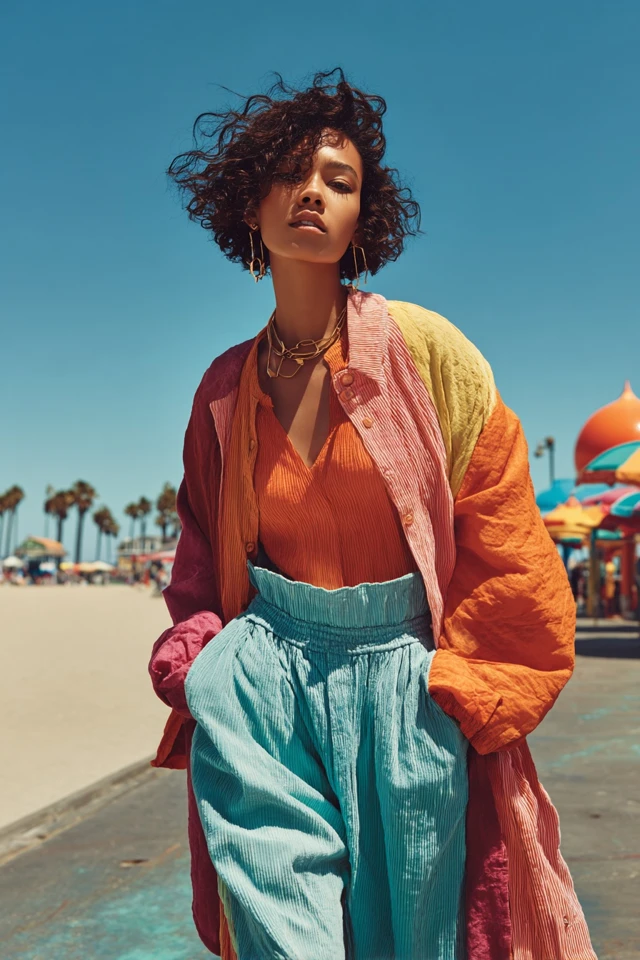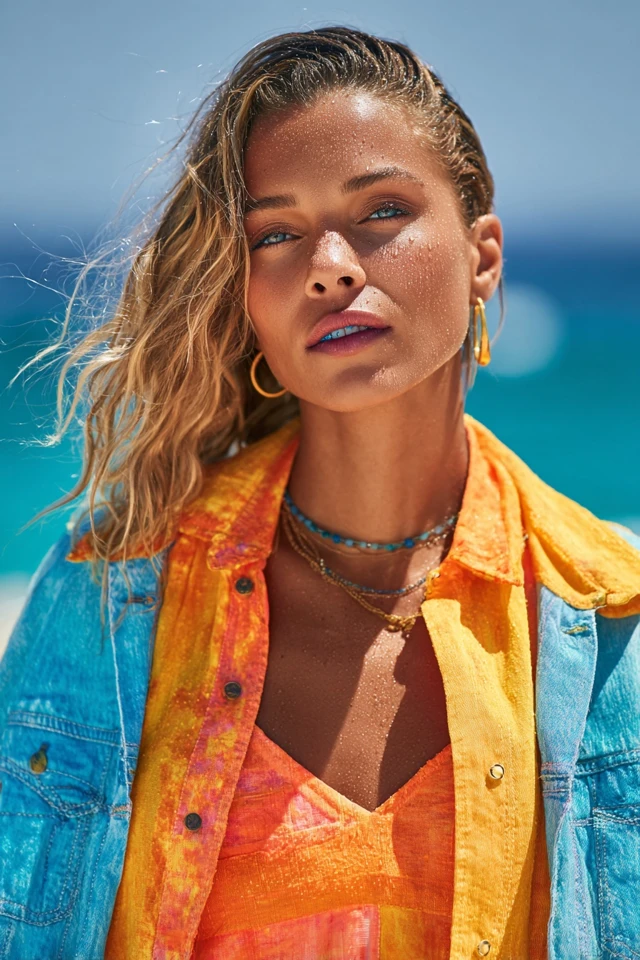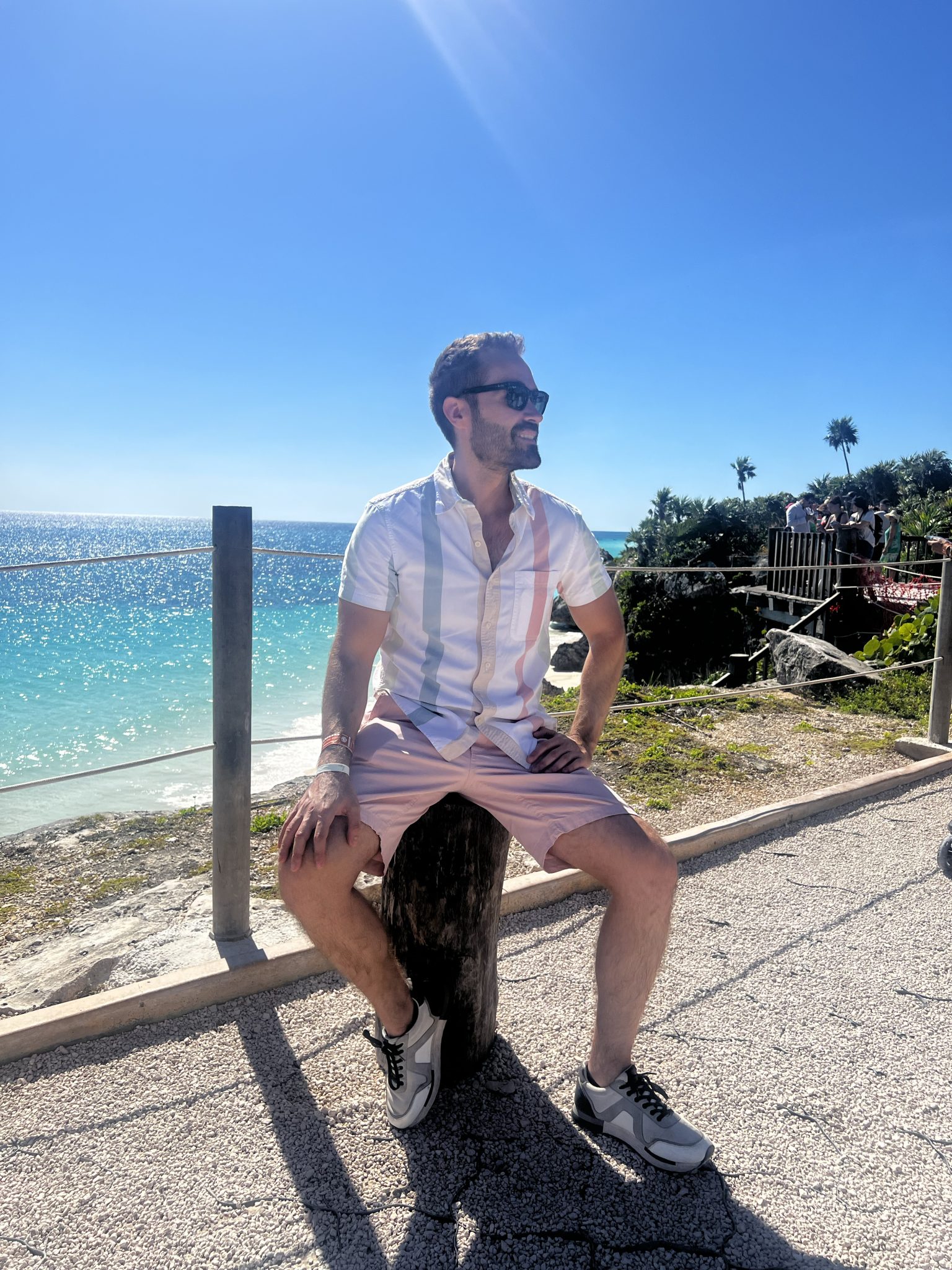Introduction
One humid summer afternoon, I found myself standing in front of my closet, frustrated by the sheer difficulty of layering clothes in a season known for its heat. Despite the challenge, I knew layering was key—not just for practicality, but for creating a versatile, stylish wardrobe that transcends fleeting trends. That moment sparked a deeper journey into understanding how to master summer layering, blending comfort with flair. It’s this blend of function and fashion that truly transforms how we feel and present ourselves each day.
Summer layering is often misunderstood as a task reserved for cooler months. Yet, incorporating lightweight layers during sweltering days and cooler evenings opens a dynamic dimension to styling, allowing for creative expression while accommodating ever-changing temperatures. It’s also a powerful way to boost confidence and dress impressively without compromising comfort. As a fashion expert with advanced degrees in fashion design and color psychology, I’ve learned that these choices extend beyond fabric and color—they shape perception and impact mood.
About the Author and My Trend Boutique
This post delves into the essentials of building a summer layered wardrobe that is both elegant and practical. From mastering color psychology and choosing the right fabrics to weaving in current trends with timeless basics, I’ll share the expertise and actionable tips you need to dress stylishly and confidently. Whether you’re refreshing your summer closet or building from scratch, these insights will empower you to make smart, joyful style decisions.
Foundational Concepts
In crafting an effective summer layered wardrobe, it’s crucial to grasp a few foundational concepts that underpin fashion’s transformative power: color psychology, trend forecasting, and the art of dressing to impress.
Color Psychology
Color psychology explores how hues influence emotions and behavior. For example, cool blues can evoke calm and trust, while vibrant reds often convey energy and confidence. Choosing colors carefully in your wardrobe can subtly communicate your mood or intentional persona. This scientific understanding complements fashion’s expressive nature and can elevate how others perceive you.
During summer, when the skin is often more exposed or highlighted by sunlight, the visual impact of color intensifies. A well-chosen palette not only enhances your natural complexion but supports your emotional well-being throughout the day.
Trend Forecasting
Trend forecasting is more than spotting what’s popular—it’s about understanding the cultural, social, and environmental factors influencing fashion’s evolution. As a lifelong stylist and researcher, I rely on reports from trusted sources like WGSN and Pantone to anticipate dominant colors and silhouettes for each season, balanced with a respect for individual style longevity.
While trends inject freshness into your wardrobe, they are best embraced selectively, always anchored by your personal aesthetic and foundational pieces. This approach prevents fast-fashion fatigue and promotes mindful consumption.
Dressing to Impress
Dressing to impress transcends mere appearance; it’s about projecting confidence and professionalism through deliberate style choices. This includes fit, fabric quality, and harmonious layering that adapts to context—from casual brunches to business meetings. When mastered, dressing to impress becomes a daily form of self-respect and influence.
In summer, the challenges multiply as one balances comfort with sophistication. Learning the science behind materials such as linen or silk blends—and how to layer them without overheating—is key to maintaining poise and presence.
Picture Gallery




Color Psychology & Emotional Impact
Colors wield undeniable power over our emotions and the impressions we leave on others. Research in social psychology confirms that first impressions, formed within seconds, are deeply influenced by visual cues such as clothing color. Wearing thoughtfully chosen colors can significantly boost self-confidence and alter how others perceive traits like approachability, authority, and warmth.
For example, summer wardrobes that incorporate soft pastels like lavender or mint green create a soothing effect, ideal for relaxed social encounters. Conversely, bolder summer shades like coral or turquoise inject a playful energy that can invigorate creativity and sociability. Each hue carries emotional baggage and cultural meaning, so understanding this spectrum allows you to curate outfits that align with your intentions and environment.
Integrating color swatches with alt text descriptions (such as “soft lavender pastel swatch” or “vibrant coral hue swatch”) in your wardrobe planning can serve as a visual reference for balancing color impact in layered outfits.
Personal Style & Body Type Considerations
Building a summer layered wardrobe also requires attention to your unique body type and personal style preferences. The right silhouettes and fabrics can enhance your best features while providing comfort amid warm weather.
Body Type & Silhouette Guidance
- Hourglass: Emphasize your waist with lightweight belts over flowy dresses or tunics. Tailored, structured pieces like a fitted vest can add definition without bulk.
- Rectangle: Layer textured fabrics such as crochet or eyelet to create dimension. Peplum tops or layered camisole sets add curves and visual interest.
- Pear: Draw attention upward using statement necklaces or bright layered tops. A-line skirts or linen trousers keep the lower half cool and breathable.
- Apple: Opt for loose-fitting, breathable layers like sleeveless cardigans over tank tops. V-necklines elongate the torso while layering sheer fabrics adds softness.
Complexion & Color
Warm skin tones glow in earthy colors like terracotta, mustard, and olive, while cooler tones shine with jewel hues like sapphire, emerald, and amethyst. Experimenting with layering different shades within your palette can create harmonious and flattering looks.
Quick Personal Style Quiz
- Do you prefer classic pieces or bold, trend-driven statements?
- Do you prioritize comfort or high-fashion aesthetics?
- Are you drawn to minimalistic neutral palettes or vibrant color combos?
- Does your lifestyle require adaptable looks for different occasions?
Answering these questions helps define your style blueprint and guides layering decisions tailored to your needs.
Current Trends & Timeless Classics
Today’s summer fashion landscape favors versatile layering with a focus on sustainability and comfort. Trending colors include muted earth tones like sandy beige and terracotta, complemented by oceanic blues and soft pastels. Textured fabrics such as linen, seersucker, and lightweight knits are gaining popularity, offering breathable options for warm days.
Key trending styles include:
- Sheer and semi-translucent layers: Ultralight silk scarves or mesh tops create depth without heat buildup.
- Breezy oversized shirts: Perfect for layering over fitted camis or sleeveless dresses.
- Utility-inspired pieces: Lightweight vests and cargo shorts add function with style.
Pair these with timeless classics such as:
- White cotton button-down shirts
- Denim jackets or chambray shirts
- Neutral linen trousers or tailored shorts
Combining trendy and classic elements ensures your summer wardrobe remains fresh yet enduring, fostering both innovation and practicality.
Practical Tips & Recommendations
Shopping Smart: Look for breathable, natural fabrics like organic cotton, linen, and bamboo blends—these support airflow and moisture management. When selecting layering pieces, choose those with versatility, such as sleeveless button-down tops or lightweight cardigans.
Wardrobe Maintenance: Rotate your summer layers regularly to prevent fabric fatigue. Hand-washing delicate items and storing them in breathable garment bags preserves fabric integrity and color vibrancy over time.
Layering Techniques:
- Start with a moisture-wicking base layer to keep sweat at bay.
- Incorporate thin middle layers like sleeveless blouses or lightweight vests.
- Finish with a structured jacket or kimono-style piece that you can remove easily.
Accessories & Color Combinations: Statement accessories such as bold earrings or silk scarves instantly elevate layered looks without adding heat. Try pairing complementary colors based on the color wheel—for example, pairing coral with turquoise or soft beige with olive green—to create harmony and vibrancy.
Integrate neutral basics as grounding tones, then add pops of color to express personality and mood. Keep a few neutral scarves or belts handy to tie diverse outfits effortlessly.
FAQs
- What is the best signature color for summer layering?
- Choose a hue that complements your skin tone and reflects your personality. Popular choices include coral, mint green, or classic navy, as these shades offer warmth and versatility.
- How can I update my summer wardrobe on a budget?
- Focus on versatile basics and gradually introduce trendy accessories or layering pieces. Thrift stores and online marketplaces offer quality finds at affordable prices. Consider capsule wardrobes for minimalist, cost-effective styling.
- What fabrics are best for hot climates?
- Natural, breathable fabrics like linen, cotton, and bamboo help manage heat and moisture, providing comfort during summer layering. Avoid heavy synthetics that trap heat.
- Can I mix patterns in a layered summer look?
- Yes, mixing subtle patterns with solid colors adds interest without overwhelming. Stick to one dominant print, such as florals or stripes, paired with neutrals or complementary patterns in similar color palettes.
- How do I transition my summer layers into cooler evenings?
- Add lightweight outer layers like a denim jacket or a knit shawl. Scarves in breathable materials provide warmth with style. Switching to warmer color tones in layers also visually prepares your look for transitioning temperatures.
Conclusion
Mastering summer layered wardrobe basics is a rewarding endeavor that blends science, style, and self-expression. By understanding color psychology, embracing your body shape, integrating current trends with timeless classics, and applying practical wardrobe strategies, you can create ensembles that not only look stunning but feel empowering. Remember, the goal is to nurture confidence and joy through your fashion choices—whether dressing for work, leisure, or social events.
I encourage you to experiment boldly with colors, textures, and layering techniques this summer. Your style is your unique signature, a visual form of communication that reveals your spirit and professionalism. Share your thoughts, favorite layering tricks, or questions in the comments below, and don’t forget to subscribe for more expert fashion insights that inspire and elevate your wardrobe journey.


